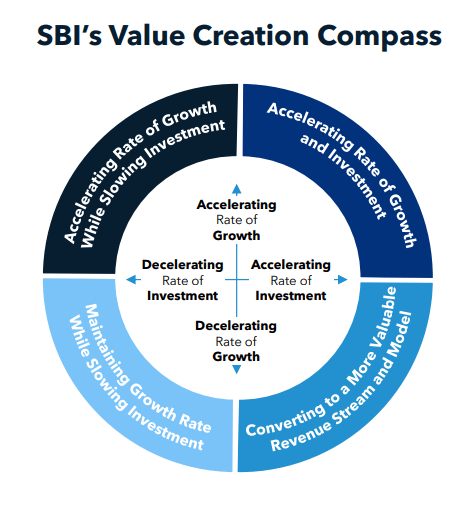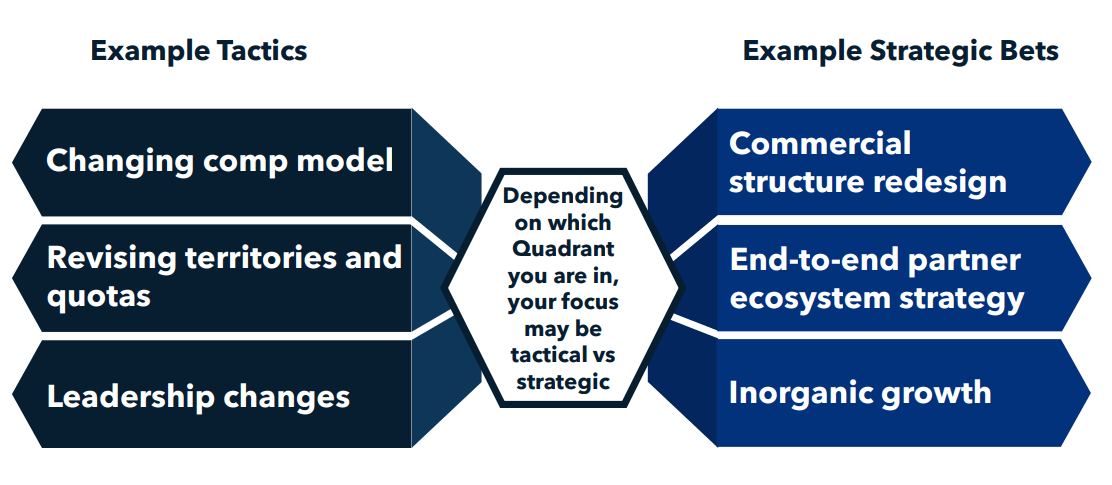The Five Elements to Effective Annual Planning


Our observations of market conditions ahead paint a stark picture for commercial leaders: profitable growth is increasingly elusive, and market headwinds continue to erode commercial efficiency. Fewer CEOs today are confident that they can achieve their growth targets, with more spending needed to gain growth points. But how are market leaders consistently ahead while others are lagging behind? The secret to their success starts from annual planning.
While CEOs are familiar with the annual planning process, few are successful in ensuring it delivers the results they want. We found that market leaders did not invest for growth differently, but they executed their annual plan faster and more efficiently. Crucially, their annual planning process involved clear strategic bets that sought to maximize desired results.
For CEOs who are still grappling with the challenges of annual planning, SBI’s experts have identified the five elements of effective annual planning, providing commercial organizations a framework to guide their annual planning efforts and regain growth momentum.
1. Determine current growth position and heading
The first step in any plan is to assess the current circumstances and intended destination. SBI has developed the Value Creation Compass to help business leaders determine their organization’s position:

Based on the organization’s current needs and spending power, CEOs must establish a clear understanding of their business realities. Consider how market conditions are shifting for the business and how growth could be affected by changing priorities. For leaders who feel as if they are behind their growth targets, weigh the value of increasing investment to drive growth points versus market conditions. Understand how effective your business can grow will determine the trajectory your annual planning process will take.
2. Align with executive team on growth levers
Whether it is optimizing the go-to-market model or boosting market penetration, we found that most CEOs are aware of what growth levers are critical to their growth success, but aligning the executive team in the same direction is often a challenge that hinders any further development on annual planning.
From our discussions with top CEOs, they can align with the rest of the C-suite executives because of a clear information base established earlier on. By setting up a single source of truth, the data directly reflects the current realities of the business that is undeniable: helping CEOs point the rest of the executive team towards growth levers that are effective and steering them away from low ROI investments. Utilize the information established in Step 1 to guide the team towards potential growth opportunities.
3. Identify and determine strategic bets
Once the executive team agrees on the direction, CEOs must identify and agree on the bets that would help get their growth plan in action. Similar to aligning in direction, disagreements are bound to happen when discussing what strategic bets would benefit the organization over others, often at the expense of resources allocated to specific functions.
SBI has several key pieces of advice for CEOs facing potential roadblocks in making strategic bets. Be cognizant of the differences in the strategic bets versus the tactics that can help make the bets happen:

Consider the time horizons and business conditions established by your growth direction and avoid making sweeping tactical shifts without a clear strategic intent. Other executive members may have an idea of what results they want, but the whole team must agree on the methods that can drive progress towards the annual plan in a timely and effective manner.
4. Prioritize bets based on emerging opportunities
As the business environment shifts, the growth plan must also be agile enough to adapt with the changes in opportunities. Earlier strategic bets may need to be reallocated or reprioritized according to the situation. CEOs should be prepared to make strategic trade-offs depending on what the business needs and the overall targets set by the growth plan.
For example, when debating focus between acquiring new logos or retaining existing customers, take several key aspects of the opportunities into consideration. Factors such as potential opportunity, time to impact, and the organization’s ability to execute are all critical parts of the decision-making process in determining if a strategic shift needs to take place.
5. Drive organizational commitment to execute the growth plan effectively
The final element of effective annual planning is also typically the largest hurdle for executive teams to overcome: successful execution. One of the key contributors to this difficulty is ensuring that every implementation links back to the growth plan, where no resources are wasted on low return investments. Crucially, CEOs and their executive leadership teams need their growth plan to deliver consistent and reliable results.
SBI recommends that leadership teams establish a dedicated change management team to oversee execution of the growth plan, such as the Revenue Growth Office (RGO). A team of specialists whose responsibility is to build conviction across functions and drive successful execution of the growth plan. Similar to how top CEOs align their executive teams around a single source of truth, implementation of new changes across functions can be simplified if people knew why it was happening.
The answer to slowing growth momentum and worsening market conditions starts from the annual planning stage, then executing on careful strategic bets that can capture immense return potential. Uncover more actionable insights to help your business get ahead in our latest Annual Planning Resource Center.